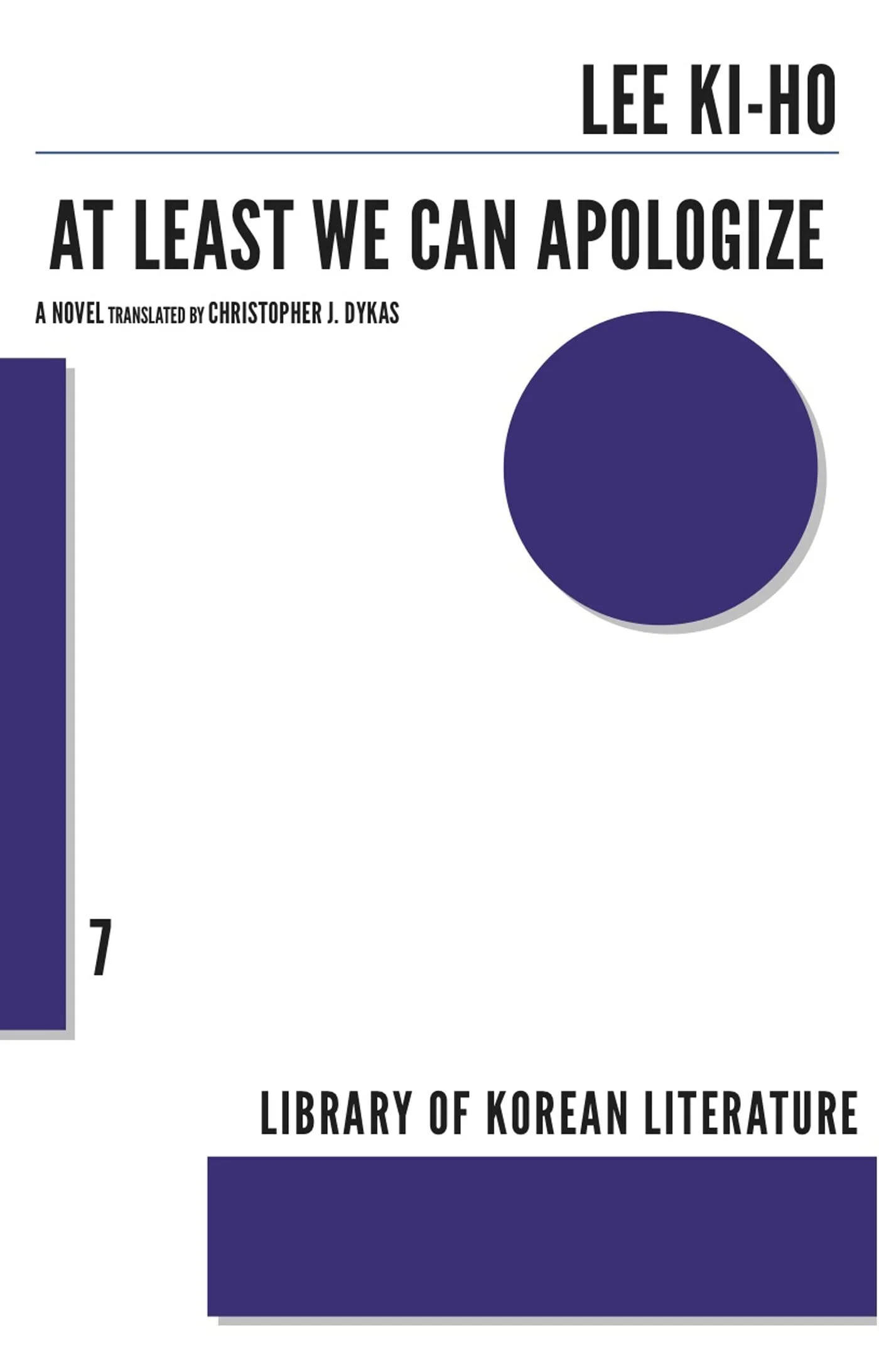A Gyopo Reads East II - Lee Ki-ho’s ‘At Least We Can Apologize’ and its Depiction of Korea as a ‘Hell Joseon’ (I)
By Injae Lee
Cover of At Least We Can Apologise, published by Dalkey Archive Press (Image via Amazon)
In this column, Injae Lee lays out his own experience reading a translated edition of a novel by Korean writer Lee Ki-ho. He points out how the dark humor utilized by Lee throughout the novel—which is written from the perspective of a mentally disabled individual—underscores the severe socio-economic challenges Korea is facing that have led many to deem the country “Hell Joseon.” This article is the first of a two-part essay. The second half can be found here.
In my first column, I spoke of how many Korean writers, such as Lee Ki-ho, are yet to win wider recognition internationally. This lack of recognition does not mean a complete lack of promotion, however: organizations such as the Library of Korean Literature have aimed to foster interest in Korean writers abroad by translating and publishing their works in foreign languages. Lee has benefited from the Library’s work; his novel, At Least We Can Apologize, has been translated into English by Christopher J. Dykas. This act of translation itself was noteworthy to your writer, who read the novel in English. The nuance necessary in translation was visible in the title: the original Korean, sagwaneun jalhaeyo, literally means We Apologize Well. However, this doesn’t capture the irony of the original Korean as well as Dykas’ chosen title, a subtle example of the discretion translators flex when trying to convey original meanings with new words. What struck me further was the slang and profanity encountered throughout the translated novel: characters regularly uttered things such as “motherfucker” and “Jesus Christ,” phrases that to me, a Korean-American, seemed highly Americentric. This would make sense, considering Dykas is also American; but my relative ignorance of Korean slang prevents me from conclusively determining the extent to which Dykas took liberties with the original text. Such ambiguities in reading translated work serve as a reminder of how the cultural and linguistic backgrounds of translators and readers alike can color the way we approach certain texts, meaning that I and readers across the world can enjoy different experiences reading what is nominally the same text in different languages.
On to the novel itself. The plot of At Least We Can Apologize centers around two characters: the unnamed narrator and his friend Si-bong, who begin the story in an “institution.” Their experiences there, told through flashbacks, show that the institution is in reality shambolic and extremely abusive: Si-bong and the narrator are prescribed and become addicted to “medication” for an unexplained “condition,” they are forced to bury a female patient that was raped by staff and committed suicide, and they themselves are regularly beaten for having committed “wrongs.” Such recollections—and the behavior of the two protagonists post-emancipation from the institution—make it clear that Si-bong and the narrator do need actual mental health treatment. Their acceptance of beatings, their ignorance of social norms, and their inability to comprehend both sex and emotions in others—besides one, as we’ll explore—indicate that the two characters possess some form of intellectual disability. That they don’t receive the help they need and are indeed abused, ostracized, and treated as freaks by both the institution’s staff and Korean society once they are emancipated is a thinly-veiled commentary by Lee on the state of disability rights and awareness in South Korea.
Indeed, the novel, with its darkly ironic humor, is a scathing indictment of contemporary South Korean society, with many of the aspects criticized characteristic of the “Hell Joseon” trope. Steven Borowiec writes for the Asia Society that Hell Joseon is a satirical term commonly used to characterize the present state of South Korea. The Hell Joseon lens decries the endemic inequality and poverty that has endured despite South Korea’s rapid development, especially after the 1997 financial crisis which forced an IMF-designed economic plan onto Seoul. The specific choice of the name “Joseon” instead of Hanguk (the term for modern-day Korea) is intentional; the Joseon dynasty, despite its relative stability and prosperity, was also highly stratified and characterized by stiff hierarchical structures and traditions, many of which are still visible in present Korean culture. Joseon’s failure to adapt to changing socio-political circumstances resulted in its decline and annexation by the Japanese Empire, and by deeming Korea to be “Hell Joseon,” commentators make clear the underlying message that present-day Korean society is not just stagnant economically; it is morally declining and fraying as its dynastic predecessor did. Borowiec asserts that a core component of the despair and frustration in “Hell Joseon” satires is their criticism of the “noryeok narrative.” Noryeok means “effort” and hard work, and Borowiec explains that “the concept of hard work has enjoyed a near mythic status in Korea; failures and shortcomings are often attributed to a lack of effort.” Hard work and quiet, stoic patience have long been considered characteristics of the Korean people and key to their success; but “the Hell Joseon crowd takes particular umbrance with noryeok as a supposed panacea for Korean society’s ills.” The Hell Joseon message is that Korean society has structural flaws and wrongs that must be corrected, or no matter how great their noryeok, people will continue to suffer and fail to escape Hell Joseon.
